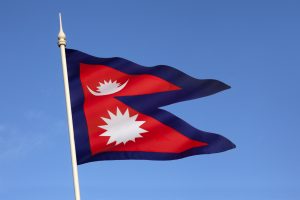On November 23, thousands of demonstrators gathered in Kathmandu, Nepal’s capital, calling for the restoration of the monarchy and the country’s prior position as an officially Hindu state (currently, Nepal’s constitution defines the country as a secular state). Supporters of the “citizen’s movement to protect the nation, nationalism, religion, and culture” gathered on the outskirts of Kathmandu and attempted to march into the city’s center carrying Nepali flags and chanting slogans in support of former King Gyanendra.
To stop the march, police used water cannons and tear gas and beat demonstrators with batons. Both sides suffered minor injuries. Authorities had prohibited protests in various districts of Kathmandu before the gathering, which was attended by followers of the former king from around the country.
The abolition of Nepal’s centuries-old monarchy in 2008 marked a significant turning point in the nation’s history. Intense, weeks-long street protests in 2006 compelled then-King Gyanendra to relinquish his authoritarian rule and usher in the era of democracy. Two years later, the monarchy was officially abolished, reshaping Nepal’s political landscape.
Following this transformative shift, King Gyanendra found himself navigating life as a private citizen. Despite the loss of his regal status, he has managed to maintain a degree of support among the populace. However, the prospects of him reclaiming the throne remain minimal, given the altered political landscape and the prevailing sentiment in favor of democratic governance.
In 2007, Nepal underwent another pivotal change when it was declared a secular state through an interim constitution. This move reflected a commitment to religious neutrality and the recognition of diverse faiths within the country. The declaration of secularism was emblematic of Nepal’s pursuit of a more inclusive and pluralistic society. However, more than 80 percent of Nepalis are Hindu, and many believe their country should embrace an officially Hindu identity at the state level.
The protesters expressed their dissatisfaction with national governance since the monarchy was abolished and their desire for a change in the political system. They accused the government and political parties of corruption and failed governance. They demanded the reinstatement of the monarchy and the establishment of Nepal as a Hindu state.
The youth, in particular, have become disillusioned with democracy and political parties. Nepal’s ruling party has been unpopular as of late as they are embroiled in inter-party fighting and corruption. To many Nepalis, their government’s failure to control the pandemic was a particularly poignant demonstration of the political establishment’s ineptitude. The role of youth in the protest movement was highlighted by the widespread use of social media to mobilize support for their cause.
The movement to restore the monarchy and reestablish Nepal as a Hindu state reflects this political landscape and the deep-rooted sentiments of a significant portion of the population. The protests have brought to the forefront the ongoing debate about the country’s political system and the role of the monarchy in Nepal’s governance. The clashes between protesters and police in Kathmandu have drawn attention to the complex dynamics of governance, identity, and political representation in Nepal, signaling a significant moment in the country’s ongoing political evolution.

































